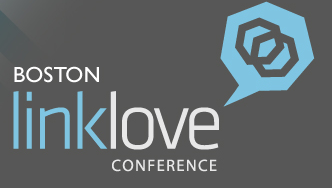 Internet marketers aren’t truly happy unless they’re able to see their work represented in numbers. Come on, don’t deny it. You know your day isn’t complete if you haven’t read at least one analytics report, or built a spreadsheet full of quantifiable data. Link building is only half done until you’ve measured the results of your efforts. And if you’re building links for clients, that data is necessary to prove the clients’ ROI and, if you’re lucky, to get them to extend your contract. Well, Justin Briggs is here to help you with that.
Internet marketers aren’t truly happy unless they’re able to see their work represented in numbers. Come on, don’t deny it. You know your day isn’t complete if you haven’t read at least one analytics report, or built a spreadsheet full of quantifiable data. Link building is only half done until you’ve measured the results of your efforts. And if you’re building links for clients, that data is necessary to prove the clients’ ROI and, if you’re lucky, to get them to extend your contract. Well, Justin Briggs is here to help you with that.
Justin is a super fast talker, and he shows a lot of data, so there are a lot of notes here, but you’ll want to get his presentation if you can. There’s a lot of great information and data in it.
He boils down link building to two things: hustle, and JFDI.
He’s asked what are the biggest issues on link building. He talks a lot about tools, scrapers, and sites like yolink, which searches the content behind links.
He’s very tactical, but let’s be serious. Links are great, but he does this to make money, for his clients and for himself. He wants to talk about the finance side of link building.
How are you currently reporting on your link building?
He says most people are doing a bad job of it. We’re doing it wrong. We’re thinking of the ROI of link building in SEO terms. There are good tools for that. Raven, SEOMoz, etc. There are also ways to manage the outreach process, like Highrise, BuzzStream, etc. You can track relationships rather than just links.
If you’re cheap, you can just build your own. Build a custom bookmarklet, pair it with a Google form, and make your own tool.
Operational metrics aren’t results metrics. The value of a link isn’t based on cost to acquire it. If you’re buying a link, they’re factoring in their efforts, not just the value of the link itself. You’re paying for their overhead.
Outcome specific metrics
A lot of people aren’t reporting on link building outcomes. But you can show corrleation by stancking ranking, traffic and conversions.
Link building needs to be tied to business results. We should be talking about business metrics. Sadly, we don’t. Revenue, customer acquisition, ROI, CPA, retention rates, etc. These are the metrics you want to try to grow, not just go out and get links.
We don’t talk in this language, and he thinks it’s very important.
Analytics bias leads to a strategic bias. You see this with a lot of organizations. Why does organic search have 80% of the demand, but only 20% of the budget? Because analytics speaks a better language than we do. We need to speak that language.
Your reports can make your link building suck
Some reporting can have a negative effect on link building. It can incentivize people to build low-quality links. He doesn’t tell his staff to build a certain number of links. He doesn’t want to think of it in those terms. He wants quality over quantity. If you require a certain number, by the end of the month, your people will just start getting whatever links they can to hit that number, regardless of the quality.
He has a competitor now that is aggressively targeting with blog network links. They’re beating him on a very valuable keyword. He wants to eventually beat them. To do that, he needs to gather more data, based on revenue. He’s going to go after the customers rather than just the face value conversions.
Go beyond crap metrics; think about the user. It’s not just because it’s great inbound marketing. Justin says Rand is very idealistic, but at the end of the day, it’s going to make more money.
Cohort analysis. Track a group of people over time. Look at the number of people you have in the first month, and determine how many will still be there in subsequent months.
They built a huge database. This is where magical things can happen. He looked at customers and their lifetime value. He broke down by keyword phrase which are just bringing traffic, and which are bringing customers and revenue.
Custom variables in Google Analytics
He starts talking about pivot tables. He says he’s going to write a blog post about it, so keep an eye out for that! He says to think of them in terms of MPV vs. ROI. MPV is about how much value you’re getting over time.
He created models in Excel to analyze different link building strategies. (You’ll want to get a copy of this presentation after LinkLove if you can so you can see all of Justin’s graphs and slides.)
Google is getting better at devaluing links over time. They’re getting better at detecting comment spam, footer links, etc., so they’re less valuable. As Google continues to get better, content will win sooner than later over time.
Buying paid links can be a good business decision if there’s a positive ROI, but content will give you a better long-term investment. If you want to come to market faster and ramp up quickly, you can buy links for a short period of time to gain market share, and then shift to content over time.
Visualizing Link Data
Justin recommends everyone download this link visualization tool. He shows some examples of the visual representations it produces. Not only are they useful, they’re actually quite beautiful. You can see your strategies played out in these graphics.
And that’s it for Justin!
Be sure to catch all of our LinkLove Boston liveblogging coverage right here on the Outspoken Media blog!

